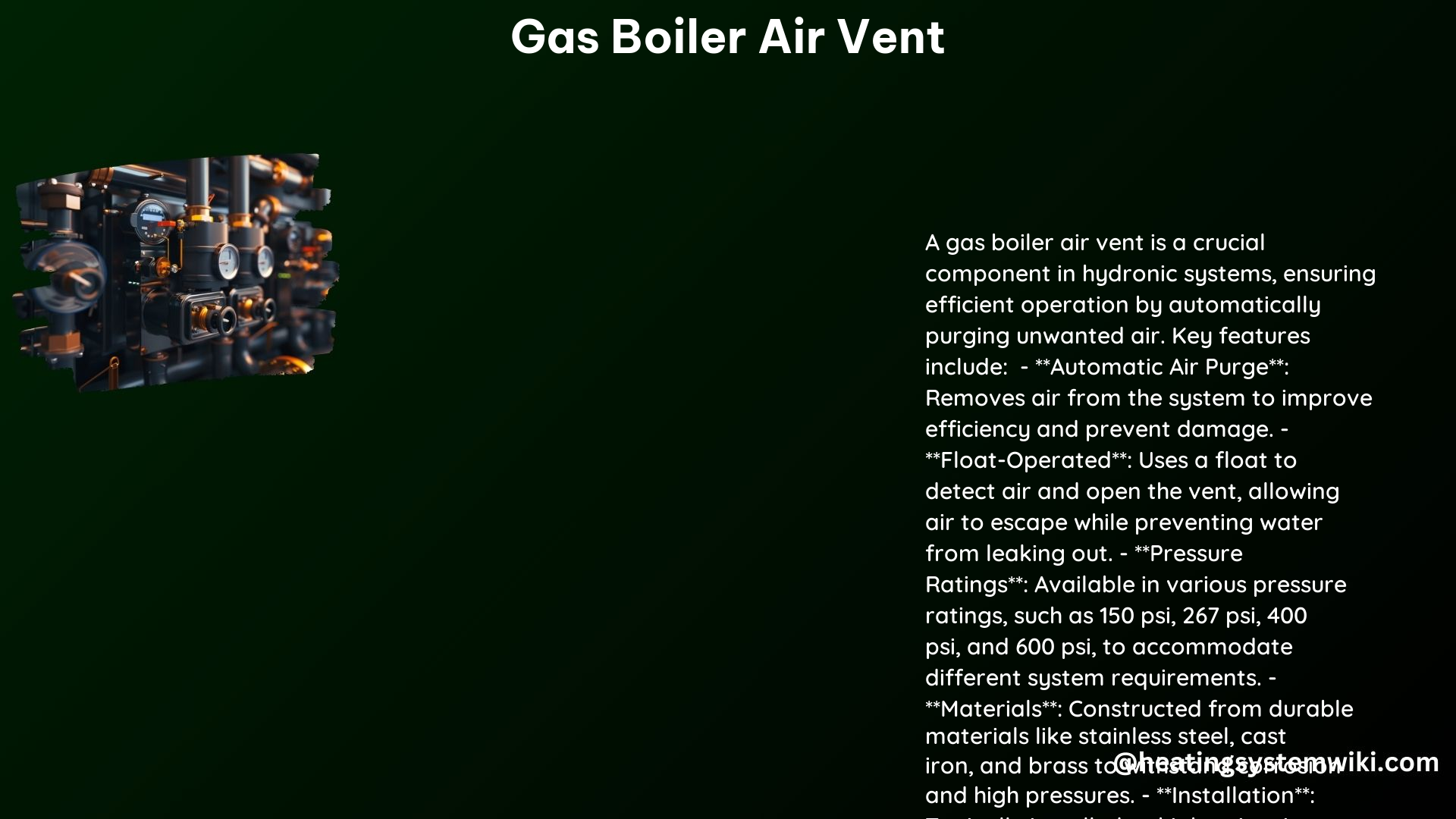A gas boiler air vent is a critical component in hydronic heating systems, responsible for the efficient removal of air and gases from the boiler and its associated piping. This comprehensive guide delves into the technical specifications of various air vent types and provides a detailed DIY walkthrough for installing and maintaining these essential devices.
Technical Specifications
Types of Air Vents
- Automatic Air Vents:
- These vents utilize a free-floating lever that closes positively, ensuring a leak-tight seal under all conditions.
- Examples include the Armstrong 1AV-3/4 Automatic Air Vent and the Bell & Gossett 4V Air Vent.
-
These vents are designed to automatically release air from the system as it accumulates, improving overall efficiency and performance.
-
Float-Type Air Vents:
- These vents employ a float mechanism to open and close the vent, allowing air to escape while preventing water from leaking out.
- Examples include the Taco 400-4 Hy-Vent and the Caleffi 502015A High Capacity Automatic Air Vent.
- Float-type vents are well-suited for systems with varying pressure and temperature conditions, as the float mechanism adapts to these changes.
Pressure Ratings
- Low-Pressure Vents:
- Suitable for systems with a maximum pressure of 150 psi.
-
Examples include the Bell & Gossett 4V Air Vent, which can withstand pressures up to 150 psi.
-
High-Pressure Vents:
- Designed for systems with pressures up to 600 psi.
- The Armstrong 11AV 5/64 Stainless Steel Air Vent is an example of a high-pressure vent.
- These vents are essential for commercial and industrial heating systems that operate at higher pressures.
Materials
- Cast Iron:
- Cast iron air vents, such as the Armstrong 1AV-3/4, offer excellent durability and resistance to corrosion.
-
Cast iron is a popular choice for residential and light commercial applications due to its affordability and long-lasting performance.
-
Stainless Steel:
- Stainless steel air vents, like the Armstrong 11AV 5/64, provide superior corrosion resistance and strength.
- These vents are often specified for harsh environments or applications where high-pressure and temperature conditions are present.
DIY Guide

Replacing a Leaking Air Vent
- Turn off the heat: Allow the system to cool down for at least a few hours to reduce pressure and temperature.
- Drain the system: If necessary, drain the water from the system to prevent water from leaking out during the replacement process.
- Remove the old vent: Use a wrench to unscrew the old vent, taking care not to spill any water.
- Install the new vent: Apply thread seal tape to the threads and screw the new vent into place, tightening all caps securely.
Servicing an Automatic Air Vent
- Clean the vent: Ensure the vent is free from dirt and debris to maintain proper function.
- Check the cap: Verify that the cap is not fully tightened, allowing the vent to operate correctly.
- Replace the vent if necessary: If the vent is faulty or not functioning as intended, replace it with a new one, following the steps outlined above.
References
- HVAC Training Video: Automatic Air Vent Operation and Servicing – YouTube
- National Pump Supply: Air Vents – National Pump Supply
- Amazon: Boiler Air Vent – Amazon.com
- Replace a Leaking Automatic Air Bleed Vent/Valve on a Boiler – YouTube
- Taco Comfort Solutions 1/8 in. Hy-Vent 400-4 – The Home Depot
